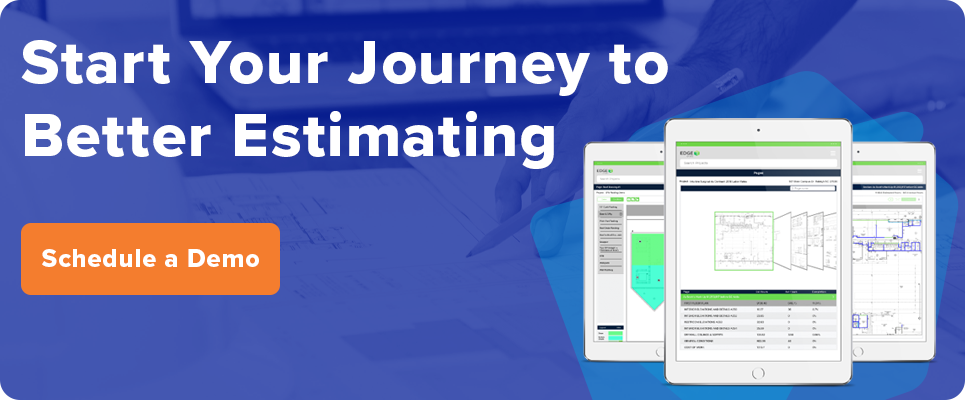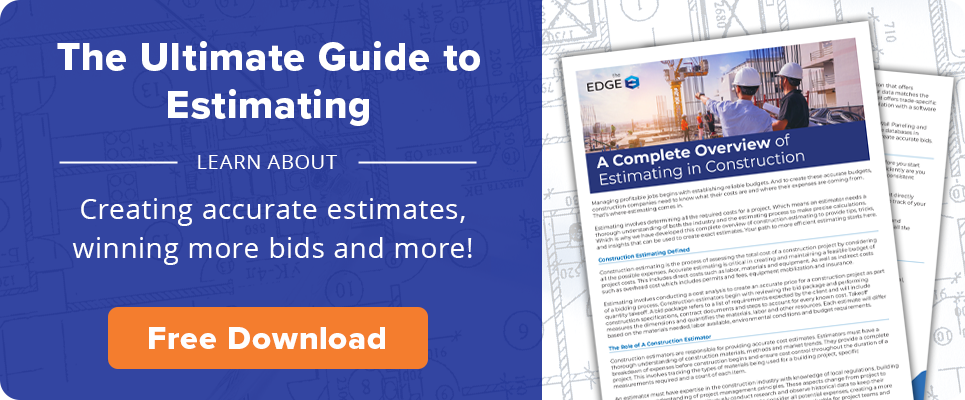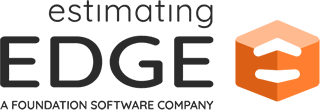
Construction estimating sets the tone for every project. It establishes the timeline, the budget, the needed materials and the labor required to complete a potential job. If a construction estimate is accurate, the company has a better chance of winning the bid and, when selected, the estimate then serves as the reference point throughout the building phase.
To keep up with the ebb and flow of the construction industry, many contractors are modernizing their approach to the estimating process — they’re finding ways to build accurate estimates faster.
Specifically, oftentimes, construction companies are turning towards construction estimating software to automate their bidding.

What is Construction Estimating Software?
Construction estimating software solution is a digital tool used by estimators to calculate cost trends and overall costs associated with completing a construction project. It can build detailed itemized estimates to help contractors create accurate project bids and budgets. Ultimately, the goal of construction estimating software is to create accurate estimates faster so contractors can win more jobs.
Which Construction Estimating Software Features are Important?
There are five key features to keep in mind before selecting your construction estimating software. These features include:
1. All-in-One Takeoff and Estimating
A construction estimating software that offers all-in-one takeoff and estimating gives estimators the ability to automatically add pricing as material quantities are determined — eliminating double entry.
Contractors can also leverage this all-in-one software to view takeoff and estimating information on the same screen, and your estimates change in real-time as you measure plans.
Without built-in takeoff, estimators must switch between multiple software and manually enter duplicate data, introducing the possibility for typos, human errors and other costly errors.
On top of that, contractors are spending extra money to have an additional takeoff software that may not integrate with their estimating software — leading to wasted time and potential errors.
2. Trade-Specific Databases
Estimators unlock a range of benefits when building estimates with trade-specific databases including:
- Faster estimating thanks to trade materials and standards being built into the software
- Less errors caused by manual data entry because the software already has items contractors need for their specific jobs
- More accurate estimates since the software includes every specific trade item and standard an estimator could need when building their estimates
- Bids built for jobs as specialty estimators can use the existing items and assemblies available that were created for specific construction fields
3. Change Order Management
Project needs are always adapting, and any alteration to a project’s scope, cost or schedule must be noted and approved — enter change order management. Some estimating software simplify change order management by auto-calculating production changes instantly, granting users the ability to quickly manage and approve change orders.
Having a construction estimating software that can communicate change orders and delegate tasks to address these adjustments helps improve workflow, avoid costly mistakes and keeps all changes visible to the project owner and crew.
4. Cloud Storage and Reporting
Cloud-based software that includes reporting capabilities provide estimators with the ability to review estimates and reports on any device from anywhere. Estimators who rely on other means of storage waste time searching for the most recent version of their estimates.
Estimators are also saving a ton of time because all the estimating information is accessible in an instant from an easy-to-use dashboard.
5. Seamless Integrations With Accounting Software
If your construction estimating software integrates with your accounting software, you receive valuable insights you can use on current and future projects.
Some integrations allow users to assign the same cost codes and cost classes from their accounting software to every line item on their estimate. After completing the estimate and winning the job, the project information and budget outlined in the estimate are seamlessly synced to the accounting software, eliminating costly errors associated with manual entry.
How Do You Choose the Right Construction Estimating Software?
When determining the right construction software for your operations you should keep a few factors in mind such as:
- Quality of software support
- Frequency of software updates
- Software training courses
Construction estimating software that offer each of these care about their user experience, which means they are more likely to take your feedback into consideration, respond to questions and concerns and invest in continuously developing the best estimating software possible.
You should also keep the features we discussed above in mind before selecting a construction estimating software. These features, including built-in takeoff and trade-specific databases, tackle most of the common issues estimators face.

If they select construction estimating software that offers all these features — like The EDGE® — they can:
- Build more accurate estimates
- Make real-time adjustments as data is calculated
- Reduce the risk of delays
- Harness estimating data throughout the project to improve productivity while reducing costs
- Improve estimating and job costing by assessing past performance
- And more!
With The EDGE, estimators can create estimates that help them win roofing, fireproofing and interior and exterior finishing jobs. Schedule your demo with The EDGE to see how you can build better estimates.





